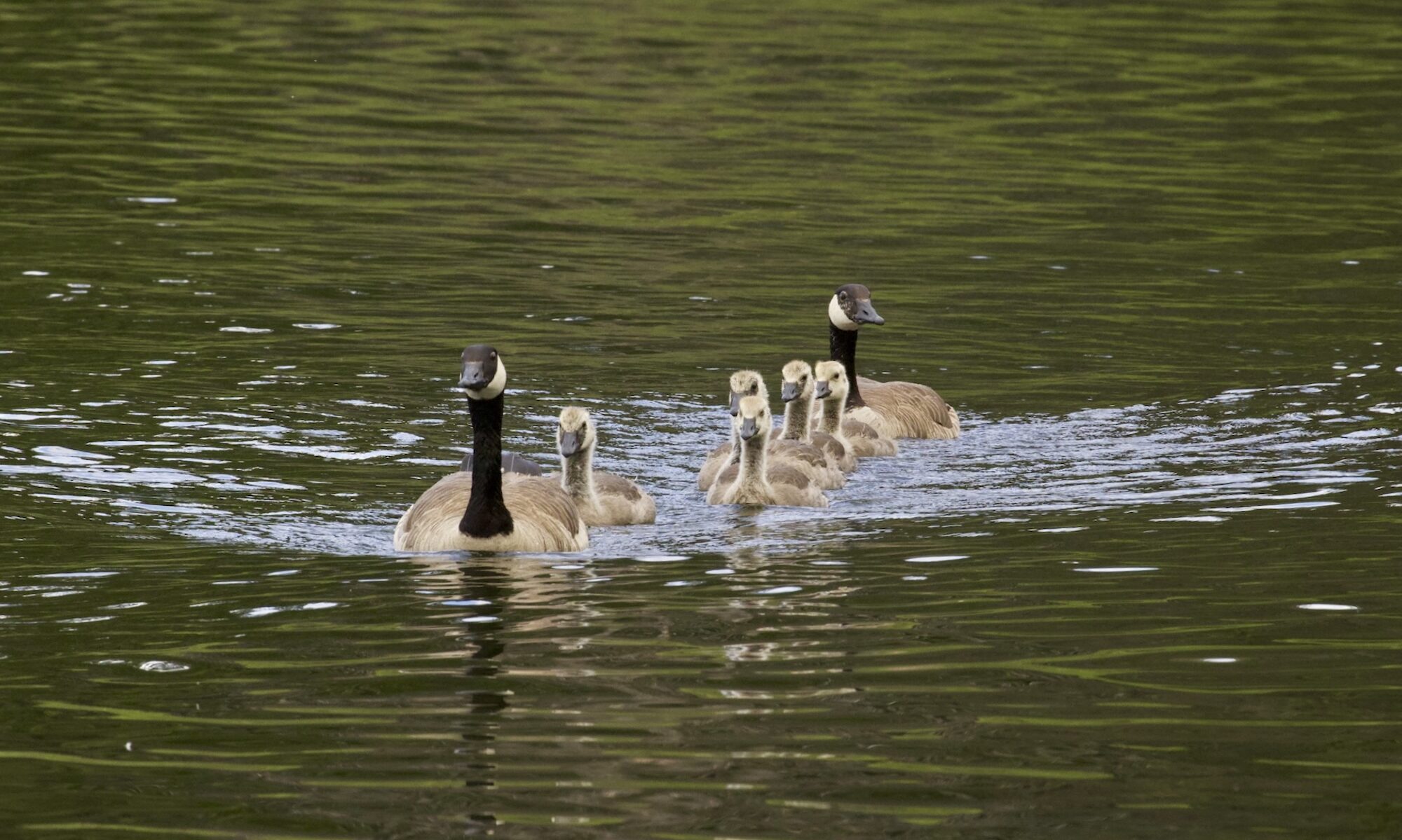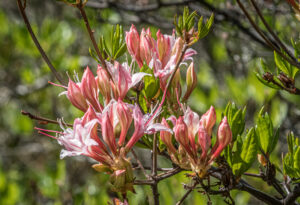
“Going once, going twice, sold to Sooney & Nick Viani for $50. Congratulations, you’ve successfully won a night’s accommodation at the Siskiyou Field Institute. Enjoy.”
In the fall of 2019, the Rogue Valley Audubon Society held their annual holiday potluck and auction that generates money for the group’s education fund. For years, Sooney has assisted in soliciting donations for both the raffle and the auction, and I enjoyed selling raffle tickets. Furthermore, both of us have participated annually as members of the Warblers, a fun group of singers that perform a few songs at evening interludes, all with a bird theme, that break up the fun-filled event. Pure fun, they liven up the evenings of giving and the event is always a success.
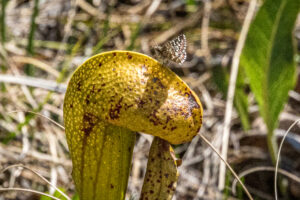
Our auction win was a destination Sooney was familiar with. The Siskiyou Field Institute is located on Illinois River Road in Josephine County, a couple miles north of Selma, OR. Traveling west on Hwy. 199 out of Grants Pass, Selma is primarily recognizable as one of the few 45 mph speed zones en-route to the coast. Lying in the shadow of Eight Dollar Mountain, the area is actually an auspicious geological area and is the interface with the Kalmiopsis National Wildlife wilderness comprising thousands of acres of pristine country. Noted especially for its serpentine soil, the area around Selma is a popular destination for botanists. In fact, not far from Selma along Eight Dollar Mountain Road is a Botanical Wayside featuring a boardwalk through an expansive display of wildflowers. The ⅛ mile structure winds through fragrant azaleas, stands of Camas, Shooting stars, and culminates at a fen of Darlingtonia, commonly known as Pitcher Plants. They’re unique in that they depend on decaying insects for nutrition, and capture insects by enticing them into a one-way trap where the victims drown and are dissolved for easy digestion.
The Siskiyou Field Institute is an 850 acre property serving as an outdoor learning environment for local schools to help students observe and interpret the natural world. In addition, scientists from al over the US and Canada visit the site to investigate the area’s diversity of invertebrates, reptiles and amphibians, mammals, plants, habitats and geology. There are hostel-style private rooms as well as dorms with shared common areas that feature a fully equipped kitchen, a great room, and an expansive terrace. This is what we bid on; and then along came Covid-19.
School trips were cancelled. State-mandated restrictions on groups and gatherings rendered the accommodations inaccessible, and field courses throughout the Klamath-Siskiyou bioregion were postponed. Our bid was for an overnight in one of the cosy rooms in the lodge and we put off our visit to to a back burner to see how the Pandemic unfolded. Well, a year later things only got worse, so come spring and following our vaccinations, we asked if we might substitute our prize of indoor accommodations for a couple nights camping in our trailer instead. They graciously honored our request, and we essentially had the place to ourselves.
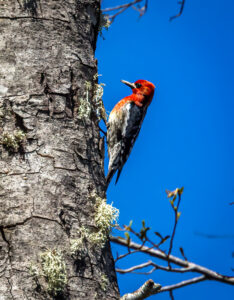
We arrived late on a Friday, and were met by Lily, the caretaker, who apologized for the dust she raised mowing the expansive lawn surrounding the lodge. We parked our Escape 21 near the bathroom/showers and Lily provided us with her contact number before departing for the weekend. The weather was perfect, and we explored nearby Deer Creek to see what there was to see. It was pretty, and quiet, and we enjoyed observing a pair of Black-capped Chickadees excavating a cavity in a nearby snag. About 30′ away was another snag and a Red-breasted Sapsucker appeared to be doing the same. We had the best seats in the house and followed that show with a bird walk down the creek. We were surprised to see only the usual suspects: White and Golden-crowned Sparrows actively flew from one blackberry patch to another, but it was otherwise pretty quiet.
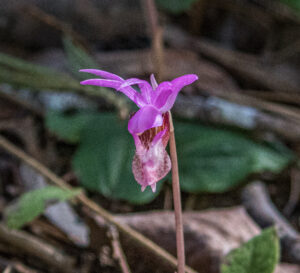
On day 2, we hiked up the creek along a nicely maintained interpretive trail and thrilled at seeing emerging Fawn Lilies and some Trilliums. In addition, there were some Calypso Orchids and Shooting Stars along the creek. The Serpentine soil is recognized as unique to the area, and the arrival of wild flowers best suited to this geology were just beginning. Sooney first heard, and then spotted a Nashville Warbler. Farther along the trail, more Chickadees and a Hermit Thrush giving us a curious look, before resuming their meal in some shrubs. Towering Oaks were just beginning to bud, creating a perfect environment for migrating Warblers to dine; but it remained rather quiet as before. After lunch we explored the lower section of Deer Creek in anticipation of the next morning’s walk. We heard a Belted Kingfisher but were 30′ of blackberries from the creek to get a look. Smart bird; maybe nesting.
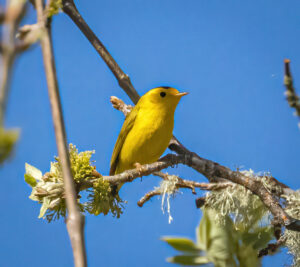
On our 3rd and final day, we hit the jackpot. According to plan, we returned to the creek and everything changed. It’s all about the food supplies, and evidently the night-traveling Warblers found the abundance of insects emerging from the oak buds a tantalizing attraction. We spotted 30 species that morning; 5 warblers, 6 sparrows, flycatchers with insects, and even a flock of turkeys sharing the meadow with some Canada Geese. Sooney eBirded the scene, and our day’s list with some media may be viewed on eBird..
